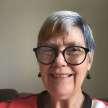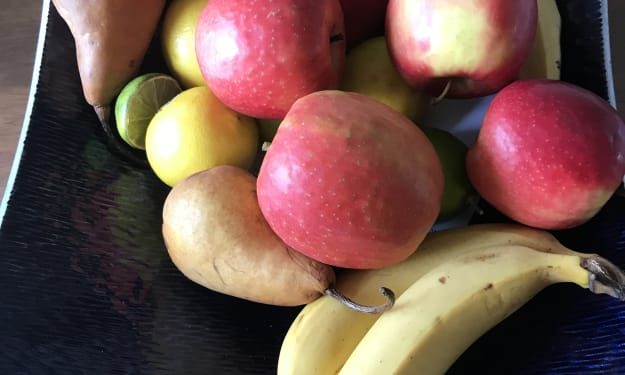
The snow lay thick on the ground as Papa’s old Fiat struggled up the hill towards the farm. Heidi and her sisters were beside themselves with excitement. As they rounded the corner, the familiar buildings came into view. The house where Onkel Rolf and Tante Ingeborg lived with their family. The cottage was the home of their grandparents, Mormor and Morfar. During the summer, the flower boxes in the window held a profusion of brightly coloured flowers. And Heidi’s favourite building, the barn.
Heidi jumped out of the car before it had even stopped and leapt into the waiting arms of Mormor and Morfar. Uncles, aunts and cousins had already arrived, the whole family gathering to celebrate Jul together. After a lot of excited chatter, Morfar took the children to the barn while the adults prepared the dinner and decorated the house. These were not jobs for children.
The barn was built into the hill and was on three storeys. A ramp led up to the top storey and each year the massive draught horses pulled trailer loads of hay up there to feed the animals during the winter. Pitchforksful of hay were sent down trapdoors to the next level. That’s where the animals lived, the horses, cows, sheep and pigs. Their dung was shovelled through trapdoors to the bottom level. In springtime, this was taken out to fertilise the fields. Although at her age, Heidi didn’t know the word “ecosystem” she understood and loved the ecosystem of the barn.
Morfar led the children to the hayloft with bottles of drink and special Christmas cookies that he had sneaked out of the kitchen. Heidi listened spellbound as Morfar told about the solstice, the shortest day of the year. It was a celebration of the coming of the light. From now on, the days would gradually become longer and the nights shorter. Farmers would decide how many animals they could feed until spring and slaughter the rest. The solstice was known as “mid-winter’s blood.” The meat would be salted, dried or turned into deliciously spiced sausages. The meat, along with potatoes, cabbages and turnips were stored in the stubbur which stood near the house, tightly locked up in case of marauding bears who might be delighted to find a feast laid out for them!
Morfar told the children about a tramp who came to a farmhouse looking for a meal. The farmers were about to turn him away, when he told them about his magic nail which could make soup. The incredulous pair put on a saucepan of water and the tramp, with much ceremony, threw in his nail. The water bubbled away. The tramp assured them that the soup was coming along well, but it might be improved by the addition of an onion. An onion was added. A little later the tramp said that a turnip would add flavour, and a short time after that, a carrot or two. How about a little salt and pepper, or even a bay leaf? Eventually the three of them sat down to a delicious nail soup. The farmers thought this was wonderful and bought the magic nail from the tramp for a high price.
Morfar related tales about trolls that roamed the mountains who would tear children limb from limb and cook them over a spit. One brave girl, about Heidi’s age, was caught by trolls. Trolls are dangerous, but they are also stupid. As she mesmerised them with stories they did not realise that the dawn was coming. At the first rays of the sun, they turned into stone and are still there to this day.
There were stories of the Norse god, of Odin, the bearded, one-eyed god who strode the earth in his broad brimmed hat and cloak accompanied by two wolves. He was said to be wise, but he could also be warlike. Thor sat in the heavens with his hammer. When he was angry he would throw around bolts of lightning to terrify earthlings. Morfar’s favourite god was Freya who rode in a chariot pulled by two cats. It was she who kept the golden apples that gave immortality to all the gods.
The children hung onto every word that Morfar spoke. The munched on the cookies – but not too many. They didn’t want to ruin their appetites for dinner!
Morfar told them about nisse, small gnome-like creatures that live in the barn. Every farm has at least one. They sleep during the day and are active at night. Treat the animals well, and the nisse will help you. If you treat them badly, the nisse will curdle the milk and your animals will miscarry. They are mischievous and easily offended. It’s best to be on good terms with them.
The most important nisse is Julenisse who comes on Christmas Eve with gifts for the children. Morfar had brought over a big bowl of porridge with a large knob of butter on top. This was to feed Julenisse to keep him on side and to encourage him to leave gifts and lollies.
The storytelling ended by Mama coming into the barn. She’d grown up on the farm, and she said that the barn was her favourite place on earth. She loved the smell of the hay and the animals, and the quietness that was only broken by the low sounds of the cows and sheep. She said that when she was a girl, she would take a book to the barn and read for hours.
The excited children gathered at the door to the farmhouse. It was only 4 o’clock, but it was dark already. As the door was flung open, Heidi was overcome with joy. The delicious smells of roast pork wafted through the house, the Christmas tree with its lights and Norwegian flags was in the centre of the lounge. Around the tree were gifts for everyone. Julenisse had been! The table was set with the especially embroidered Christmas tablecloth and candles.
First, the family gathered to sing carols and to dance around the Christmas tree. Heidi lovingly looked at her youngest sister, Annemarie. This was the first year that she had danced around the tree without being carried by Mama. Then there were presents. Heidi opened her gift carefully and found a book of Norse fairy tales. Had she ever been so happy?
That was sixty years ago. Heidi still visited the farm from time to time, now run by her cousin Ingrid and her husband. The draft horses were replaced by tractors, but really life continued as it had always been. As she reflected on life there, her sense of belonging, Morfar’s stories that had shaped her, she took a long drink of her coffee and looked around her study. She saw her numerous award for children’s books and the book of Norse fairy tales she’d received that Christmas which still had pride of place.
About the Creator
margie dahl
Learned to love the power of story from my grandma who told me stories of her childhood and her early days.
Passionate about the use of storytelling in my role as a minister. Love to delve deeply into biblical and other stories.






Comments
There are no comments for this story
Be the first to respond and start the conversation.